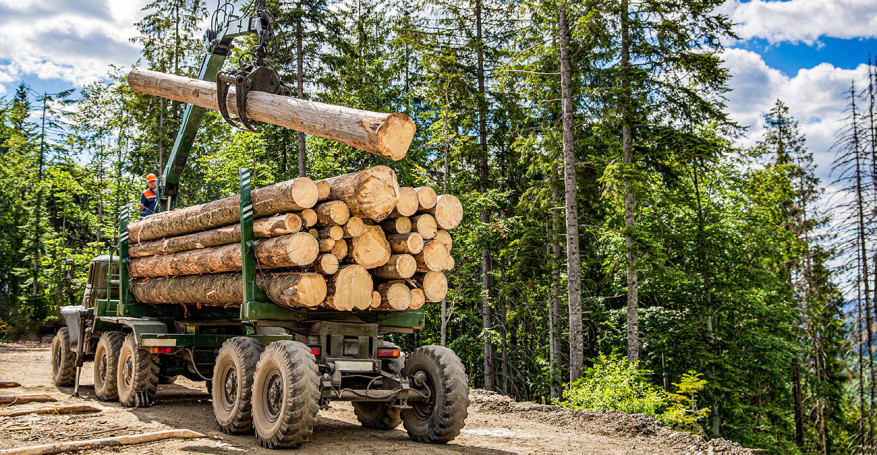GSPP Researchers on How to Reform California’s Cap-and-Trade Program
We just found millions in waste in California’s cap-and-trade program. Here’s the fix

Everyone loves a get-out-of-jail-free card. So, when California’s cap-and-trade program was created almost 20 years ago, lawmakers struck a deal: They gave polluters the option to purchase carbon offsets in lieu of reducing a portion of their climate-heating emissions.
In other words, the dirtiest companies in California, rather than reduce their pollution, could pay others across the country to not pollute on their behalf. Most often, this took the form of companies sending money to out-of-state forest owners who promised to manage their lands more sustainably.
The goal behind this initiative was simple: to give California polluters more flexibility to use oil and gas in their operations, since paying for offsets is usually cheaper — or at least easier — than actually reducing emissions.
In practice, however, the vast majority of these offsets had little to no real climate impact.
We study carbon credits at UC Berkeley and have spent years uncovering systemic problems in the offset market. Our research has found that most of California’s offset program has had little to no meaningful impact.
Consider “improved forest management,” which accounts for three-quarters of all California-approved offsets. In these projects, landowners promise not to cut down trees that they claim were destined for the sawmill. However, our research found that landowners regularly overstate how much timber they plan to harvest, thereby earning money from credits while sticking to business-as-usual.
Adding to the problem is that any actual reduction in logging just shifts timber demand to other places. After all, the number of new houses and development projects doesn’t decrease just because some forest managers decide to change their harvesting practices. Because the timber market is global, reducing logging in one place might increase harvesting next door — or across the world, likely from Canada.
As it stands, we haven’t seen increases in harvesting elsewhere because California’s protocol has had such little impact on forest management practices. For example, some California polluters have purchased credits for “protecting” forests that are already protected.
Just how bad is the problem?
In an analysis we published Wednesday, we found that California companies spend $140 million each year to purchase these highly dubious offsets from out-of-state projects — money that could have instead been spent in state to reduce emissions, lower energy bills and improve air quality for lower-income residents.
Currently, lawmakers are debating whether to reauthorize the state’s cap-and-trade program and if improvements should be made. We have a simple suggestion: Replace the offset program with payments into a fund that keeps dollars in-state and is dedicated to improving energy affordability for low-income Californians and cutting climate pollution.
What could that look like in practice?
When Oregon rolled out its cap-and-trade program just last year, its lawmakers were careful not to repeat California’s mistakes. Instead of letting polluters pay for offsets, they created Community Climate Investment credits. Instead of offsets, polluters can contribute to a fund in exchange for credits that they can use to cover a portion of their emissions, but the revenue goes directly toward reducing energy costs and improving air quality and public health for lower-income Oregonians and tribal communities — all while reducing emissions.
In Oregon, these credits cost $132 each. In California, the current price of offsets ranges from $15 to $35. Oregon’s credits are more expensive because their price reflects the true cost of preventing pollution. But if California wanted to create an Oregon-style program, the state could set a limit on credit prices, which would avoid increasing electricity or gasoline costs — and would still be better than purchasing phony offsets.
In California, the same $100 million each year that currently goes out of state could support more energy-efficient homes, cleaner air, urban green spaces and healthier ecosystems. That infusion of support would be particularly helpful at this moment of budget instability, as the Trump administration tries to claw back funding for climate and environment programs, and while tariffs send the cost of new energy-efficient appliances skyward.
Rather than simply extending the current cap-and-trade program, Californians would benefit tremendously from following Oregon’s example. California’s current program was a strategic investment in the state’s future. Now, lawmakers have a chance to fix its weakest link. Let’s stop spending money on fake carbon credits — and invest instead in clean energy, affordability and environmental justice here at home.
Barbara Haya is the founding director of the Berkeley Carbon Trading Project at the UC Berkeley Goldman School of Public Policy. Stephen Lezak is a researcher at the Berkeley Carbon Trading Project and the Smith School of Enterprise and the Environment at the University of Oxford.
This opinion was first published in the San Francisco Chronicle.
